Table of Contents Show
It is no secret that MTV, from its initialism “Music Television,” has become a symbol of much more than “reality television” for anyone born between 1980 and 2000. (( Dimock, M. (2019, January 17). Defining Generations: Where Millennials End and Generation Z Begins. Pew Research Center; Pew Research Center. )) All you hear about are the “good ol’ days” on social media when famous musicians were harmed for cash while trying to remain as silent as possible (Silent Library 2009-2011) or when children were feted on their sweet sixteens for exorbitant amounts of money (My Super Sweet 16 2005-2017).
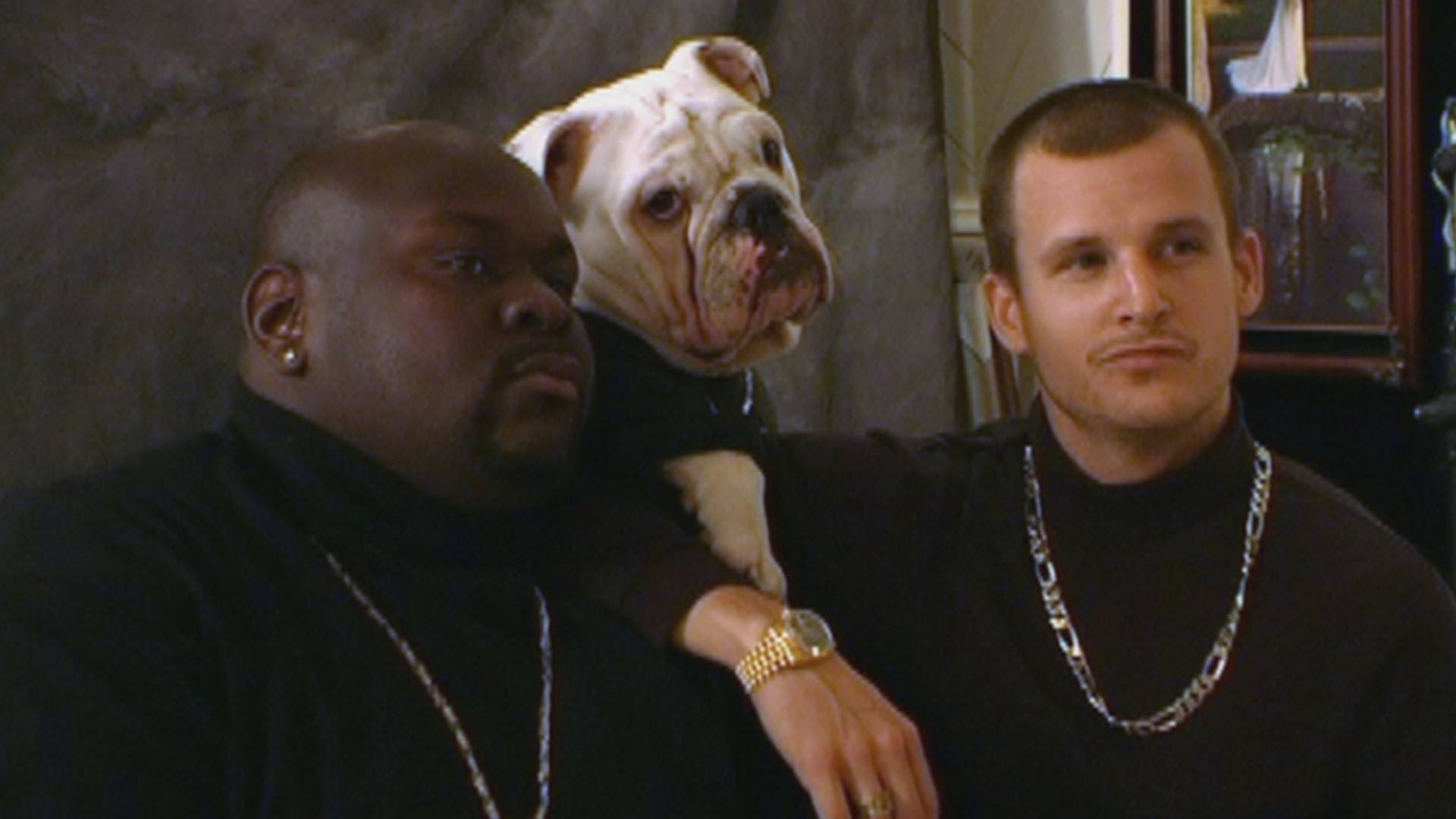
In the early 2000s, our ‘reality television’ (“scripted television”) was dominated by compelling shows such as Real World (The Real World)1992-2017, Jersey Shore 2009-2012, True Life 1998-2017, Teen Mom 2009-2011, My Life as Liz 2010, Laguna Beach 2004-2006, and, yes, even Silent Library 2009-2011, and they all had one aspect in common: they aired on MTV. (It felt that, for some reason, shows that seemed to be about nothing and everything kept us engaged for multiple seasons and across multiple episodes — Parental Controls 2006-2010 was on for seven seasons; it is true.)
It remains the case, however, that MTV created this meta opportunity that allowed viewers to observe another’s life in such a comforting manner that it became a daily desire to follow their story, even including the rich and famous. Rather than portraying celebrities as caricatures (much of how they are today), it depicted them as authentic. It gave viewers insight into celebs’ lives and it felt unpretentious: MTV Cribs 2000-, The Ashlee Simpson Show 2004-2005, Rob & Big 2006-2008 — even a simple show like My Sweet 16 had the potential to be heartwarming and empathetic sometimes.
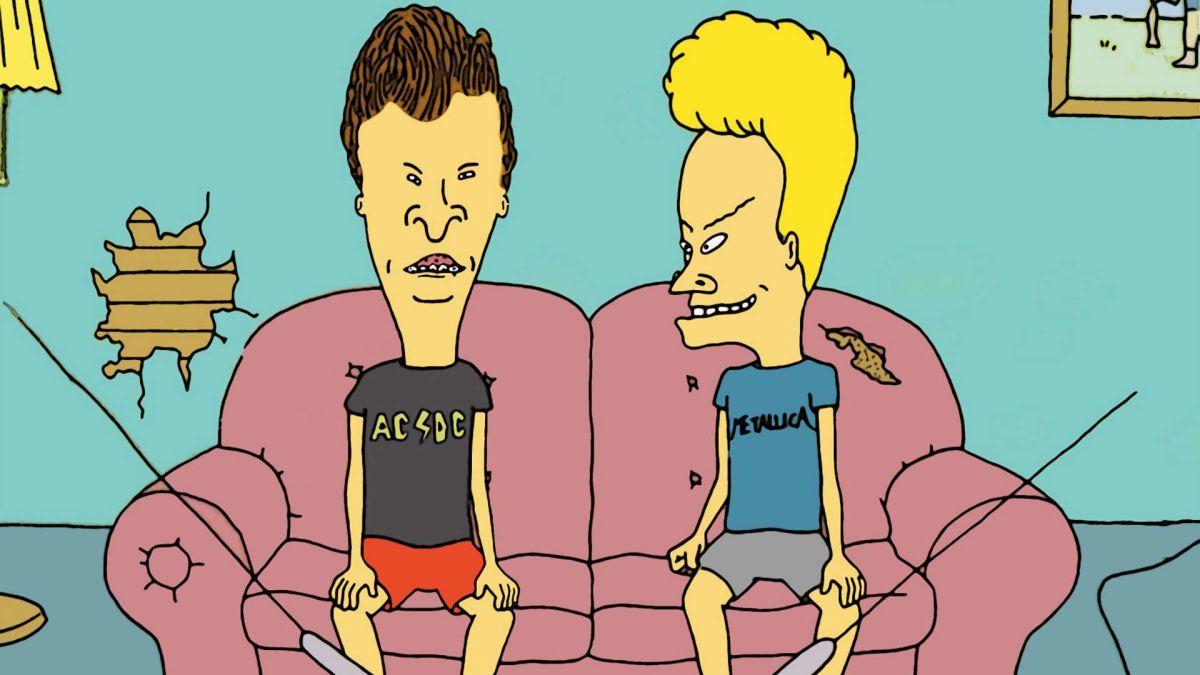
Although ‘reality television’ has a completely different meaning today than it has in the past (and we also live differently today), MTV’s reality shows were and felt different. And it was because of their authentic meta-ness, combined with their commitment to supporting independent music of all genres, which created a sense of difference among what else was being played on television.
MTV’s musical zeitgeist (MTV Unplugged 1989-) created a sense of identity, which then spread into its reality television show blocks (Laguna Beach 2004-2006, Awkward 2011-2016, Made 2003-2013). Each show had a selection of some of the hottest and most obscure tracks of the decade (if not performed by the artists themselves). The versatility of MTV remains one of its greatest achievements as a network because it offered viewers the opportunity to watch a wide variety of empathic and meta shows while also listening to a wide variety of music, and in an almost continuous manner.
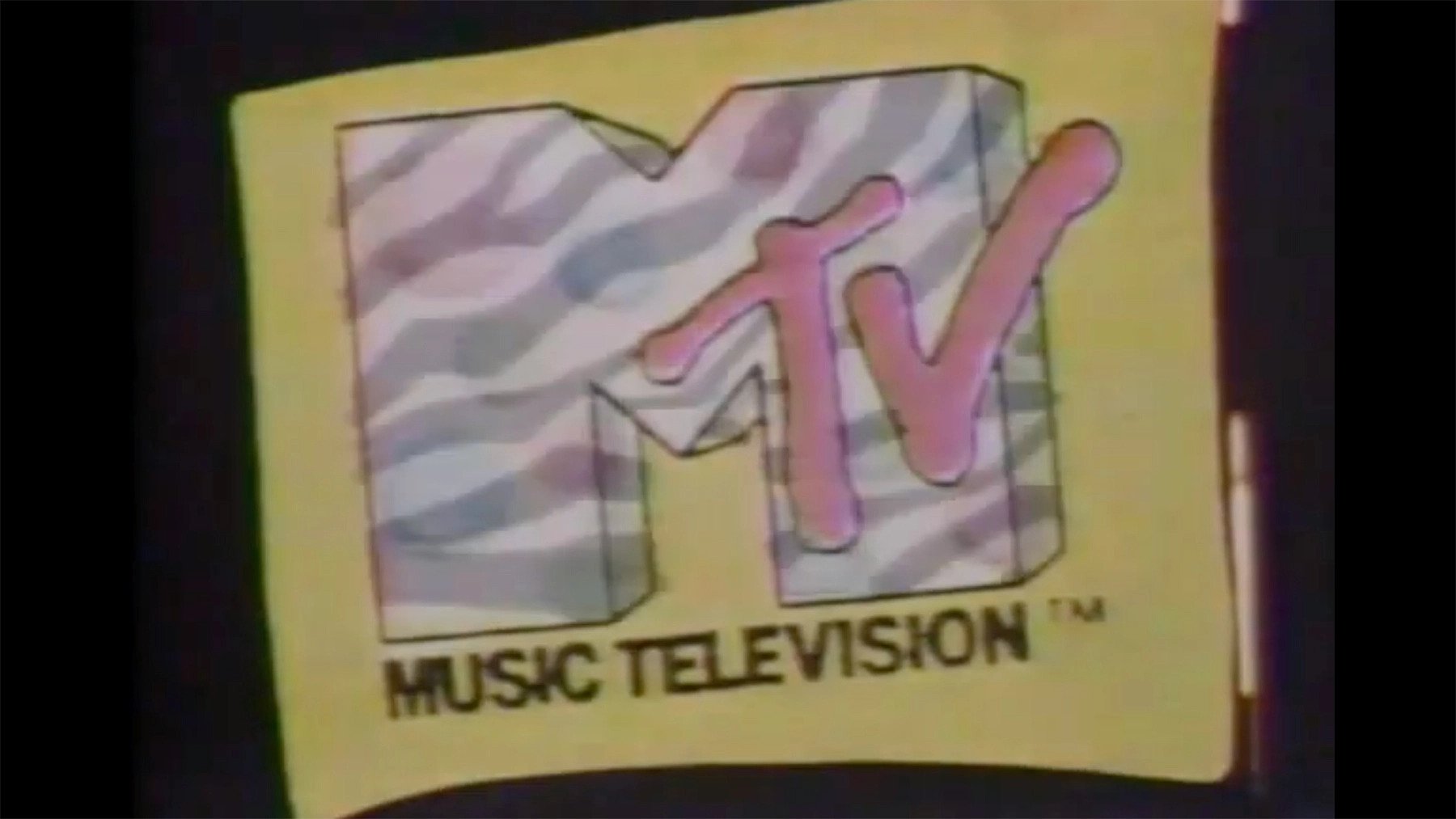
It may seem anomalous to claim that a company defined what it meant to live authentically through music videos and its passion for music, but MTV defined what it meant to grow up as a millennial during the early 2000s; its use of scripted television, music, and satire (Celebrity Deathmatch 1998-2007, Beavis and Butthead 1993-, Daria 1997-2002) has contributed to a legacy that is not just a product of zeitgeists but a part of our hearts as well.
“Let’s Rock N’ Roll”
MTV was founded in 1981 as a twenty-four-hour cable channel dedicated to premiering music videos. A number of the company’s shows, at the time, were introduced by video jockeys (Nina Blackwood, Mark Goodman, Alan Hunter, J. J. Jackson, and Martha Quinn), and many of the voiceovers, as well. During the course of its tenure, the company would eventually expand into reality television and become involved in “sister channels.”
Brief History Of MTV’s Entry Into “Music Television”
MTV was launched at approximately twelve in the morning in August of 1981. It established itself as a new music platform almost overnight with the introduction: “Ladies and gentlemen, rock and roll.” It was accompanied by the Space Shuttle launch countdown of Columbia (which occurred earlier that year) as well as the Apollo 11 launch and was followed by the theme song composed by Jonathan Elias and John Petersen. Since its inception, MTV has become synonymous with its signature typeface and rock ‘n’ roll mentality.
Initially, MTV was aimed at audiences aged twelve to thirty-four but discovered years later that their more realistic audience was between the ages of twelve and twenty-four, being as they were able to binge-watch for an extended period of time as compared to older adults.
Englis states in “Music Television And Its Influences On Consumer Culture, And The Transmission Of Consumption Messages” that
“MTV targets audiences between the ages of twelve and thirty-four, with a median age of twenty-three, a group that has proven exceptionally difficult for other media to reach.”
(( Englis, B. G. (2013). Music Television and Its Influences on Consumer Culture, and the Transmission of Consumption Messages. ACR North American Advances, NA-18. ))
The same study by Basil G. Englis of Rutgers University in 1991 concluded:
“In accordance with MTV’s own research, 54% of its audience is between the ages of 12 and 24. On average, this group watches MTV for half an hour to two hours each day.”
(( Englis, B. G. (2013). Music Television and Its Influences on Consumer Culture, and the Transmission of Consumption Messages. ACR North American Advances, NA-18. ))
MTV’s recognition of this demographic catapulted them into a mainstream audience, making them an art form as well as a marketing tool beneficial to artists and those who viewed them whether it was inside their homes on MTV Cribs 2000-2010 or on dating shows like Next 2005-2008:
“Despite their origins as promotional tools for record albums, music videos provide their viewers with much more than just music: they provide information about fashion and cosmetics, lifestyles, and social roles and behaviors.”
(( Englis, B. G. (2013). Music Television and Its Influences on Consumer Culture, and the Transmission of Consumption Messages. ACR North American Advances, NA-18. ))
MTV’s Moments Of Notoriety
- In support of the release of Adrian Lyne’s Flashdance in 1983, MTV provided clips that played on its regular rotation to support the marketing of the film.
- During the AIDS epidemic of 1985, MTV established the safe-sex initiative, which continues to run today as “It’s Your Sex Life” as they believed that teenagers would be more receptive to hearing about safe sex from MTV than from their parents. (And, they were right!)
- In 1984, the “Video Music Awards” (VMAs) were introduced, and today it is one of the most watched events in the entertainment industry.
- Summer 1986 marked the beginning of MTV’s spring break coverage, which involved eight-hour blocks of live performances, interviews, entertainment, and video jockeys. (( Wikipedia Contributors. (2023, March 17). MTV Spring Break. Wikipedia; Wikimedia Foundation. ))
Additionally, MTV would support weekly music events such as All Access Week.
The MTV Marketing Postmodern Shift Toward Millennial Adults
MTV began to shift in 1999 when it began to air fewer and fewer music videos throughout the day, in support of its MTV Uncensored series, which lasted until 2001 (( Cohn, S., & Levin, D. P. (2023). MTV Uncensored. IMDb. )). As a result, MTV played 36.5% fewer music videos from 1995 to 2000. (( Wiki Targeted Entertainment. (2023). MTV. 90s Cartoons Wiki. )).
The CEO of the company, Van Toffler, stated that the “appeal of music videos had worn off,” and they needed to reinvent themselves in order to appeal to a new contemporary generation. (( Gonzalez, J. (2020, September 15). How Did MTV Become the “Ridiculousness” Network? The Ringer. ))
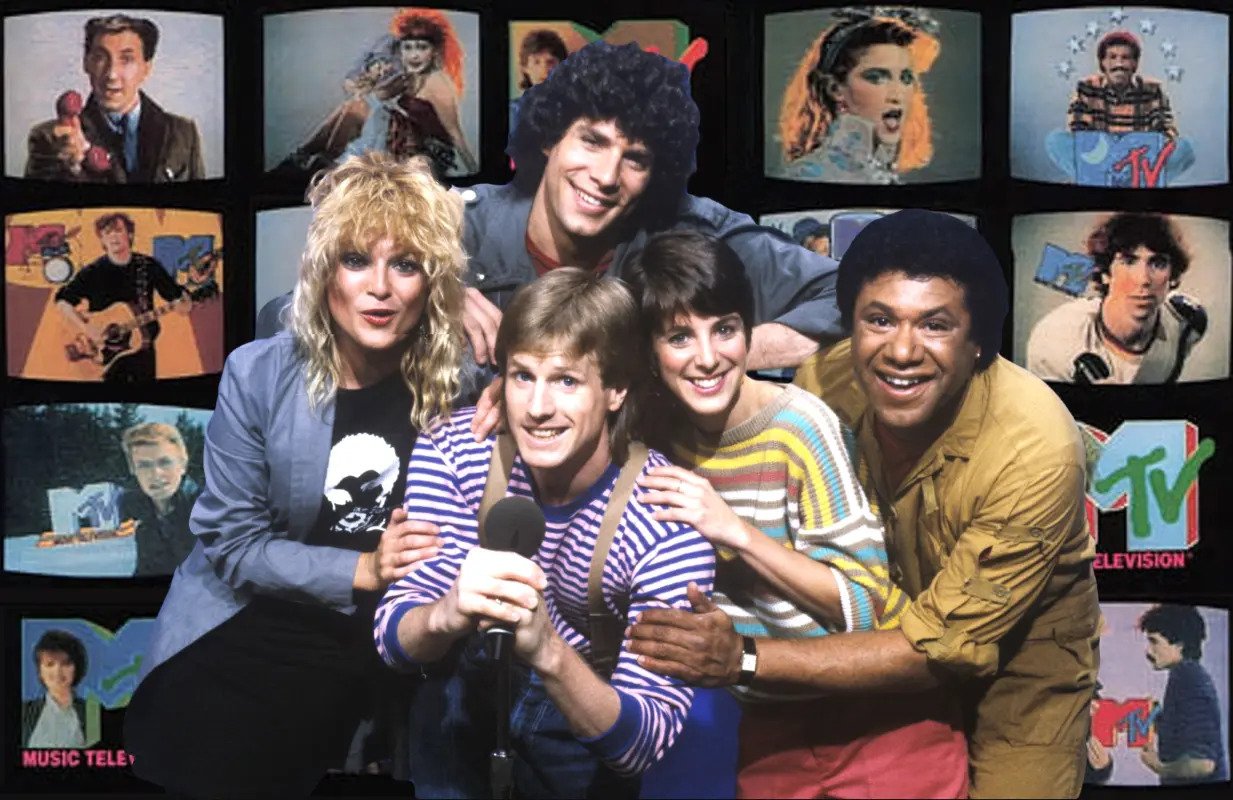
Even though MTV began to play fewer videos, it maintained its status as a music television network and added a 10pm block entitled 10 Spot with Dana Fuchs (( The 10 Spot. (2023). Absolutelypointless.net. )), and, as of 2000, MTV continued to broadcast music videos eight hours a day. It was not until 2008 that they began to limit the amount of music played to three hours, and, then, from this point forward, music video blocks were relegated to the early morning hours of MTV.
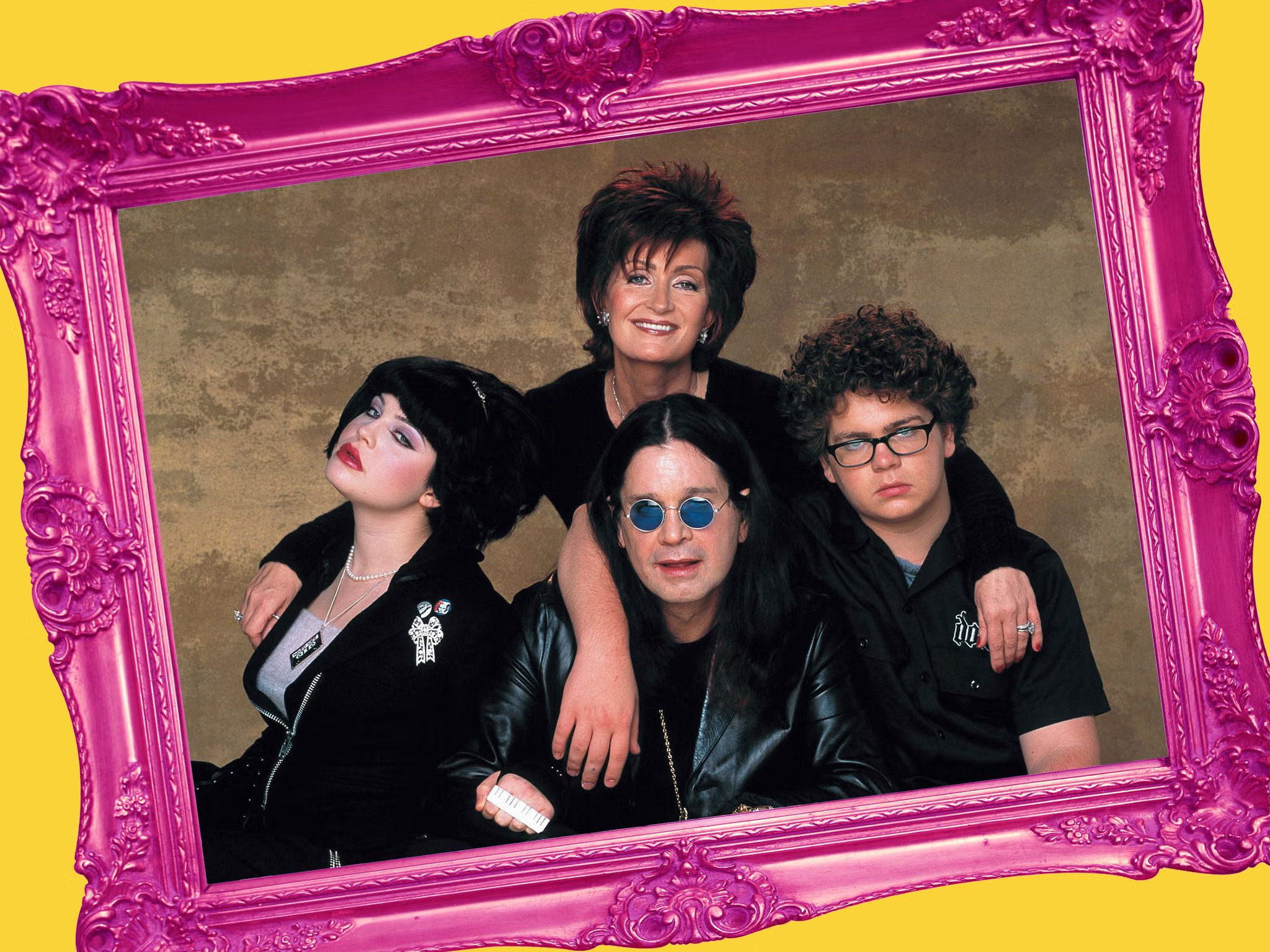
As the decade progressed and the generation shifted, MTV shifted its programming away from music videos to programming related to music, either lightly or heavily. As a result of this, MTV became known for both its music and its engrossing use of meta-television, with some of its reality programs following musicians’ lives. In 2002, The Osbournes (( The Osbournes. (2002, March 5). IMDb. )) premiered, and in 2007, A Shot At Love With Tila Tequila (( McCormick, R., & SallyAnn Salsano. (2007, October 9). A Shot at Love with Tila Tequila. IMDb. )) revolutionized how people saw celebrities’ lives.
Total Request Live 1998-2003
Our childhood was defined by Carson Daly‘s hosting of Total Request Live (( Wiki Targeted (Entertainment. (2023). Total Request Live. MTV Wiki. )) (at least mine was). MTV’s interest in music television shows for engaging younger viewers began with Total Request Live 1998-2003, a merger of Total Request and MTV Live. The younger audience was the ideal demographic for engaging in celebrity and music fanaticism (they were the ones buying the posters to put on their walls after all). Existing as an amalgamation of a television talk show and a music production, the show was well received by the millennial generation aged twelve to twenty-four at the time, and during 1999 and 2001, Nielsen reported that the show had its highest average audience. (( Marks, C. How Total Request Live Created the Boy Band Boom and Saved MTV (for a While). Vulture. 2017, November 8. ))
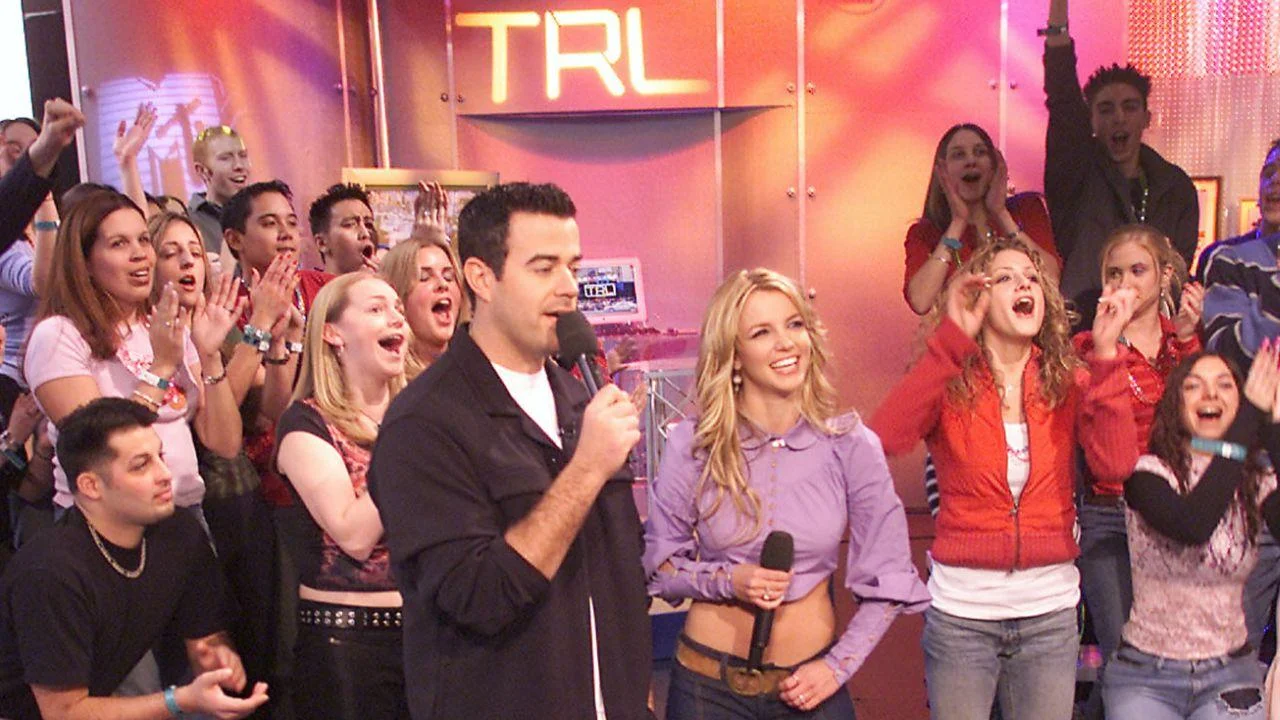
According to Marks at “Vulture:”
“In 1999, at the zenith of the teen-pop boom, the show averaged 853,000 viewers, according to Nielsen, and shaped the idea that tweens and young girls were not simply a flush consumer group, but one whose aesthetic choices were of the same quality and integrity as their broseph counterparts (a practice referred to as “poptimism” by music critics).”
(( Marks, C. How Total Request Live Created the Boy Band Boom and Saved MTV (for a While). Vulture. 2017, November 8. ))
After Daly left the show in 2003, Total Request Live ended with a final episode, “Total Finale Live,” airing on November 16th, 2008. From 1998 to 2003, MTV attempted to air other music video series such as TRL, but most failed to reach the same quality and ambiance/nostalgia.



During the taping of Total Request Live, a live studio audience and a countdown of the “top ten” music videos were filmed in front of an open window in Times Square; it also included live performances and interviews with guests. There was a wide range of celebrities in attendance, including Britney Spears, Lady Gaga, and Destiny’s Child.
MTV’s Meta-Era
At the peak of MTV’s reality, scripted, television was more of a look into the lives of ordinary people doing ordinary things; this quality was what made True Life 1998-2019 so special as episodes covered a variety of subjects during its seventeen-year run, including professional wrestling (( True Life. “I’m a Pro Wrestler.” 8-16-1999. MTV. )), drugs (( True Life. “I’m Hooked on OxyContin.” 10-16-2003. MTV. )), the porn star industry (( True Life. “My Parents Are in Porn.” 2-29-2016. MTV. )), weight issues (( True Life. “My Boyfriends Fed Up With My Weight.” 6-25-2014. MTV. )), alcohol abuse (( True Life. “I’m an Alcoholic” 01-05-2008. MTV. )), and a wide variety of other topics.
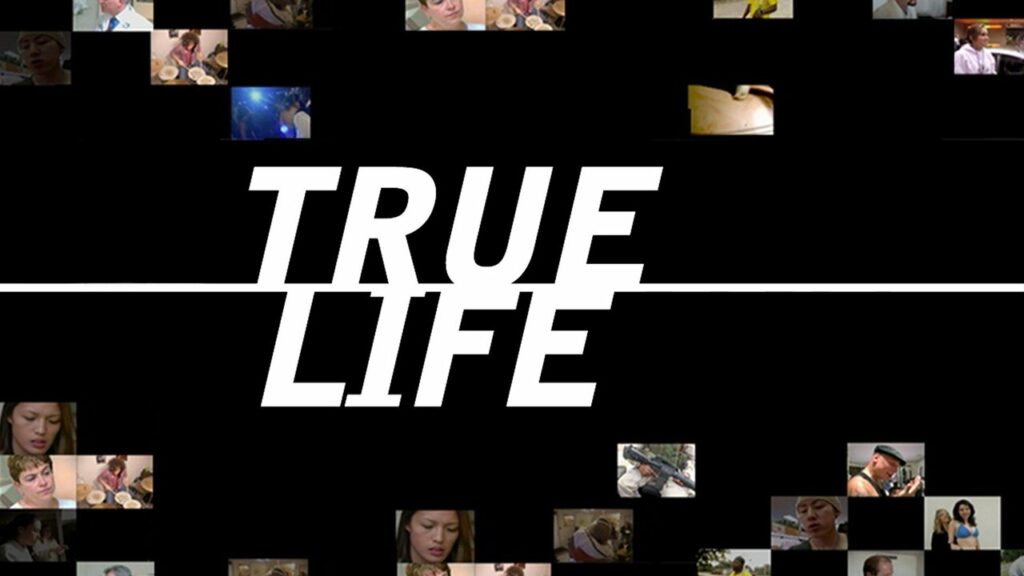
These series, and so many others, were integral to the development of MTV’s musical soundtrack in the early 2000s. They played a significant role in elevating MTV’s 2000’s everyday life.
The Real World 1992-2019
As one of MTV’s longest-running reality shows, The Real World 1992-2019 spans over a decade; the series spans 33 seasons and 614 episodes. In the same vein as other shows in this category, Real World explores AIDS, drugs, racism, death, politics, religion, abortion, sex, and substance abuse.
 Everything That Happened in Season 1 | MTV. YouTube. 2021.
Everything That Happened in Season 1 | MTV. YouTube. 2021.In spite of the series’ negative reviews regarding its depiction of its themes, it still succeeds in presenting narratives for a young adult audience in an engaging manner. Real World aims to create a social commentary about young adulthood by bringing together modernism, postmodernism, and hyperpostmodernism in order to show adults as unhinged characters.
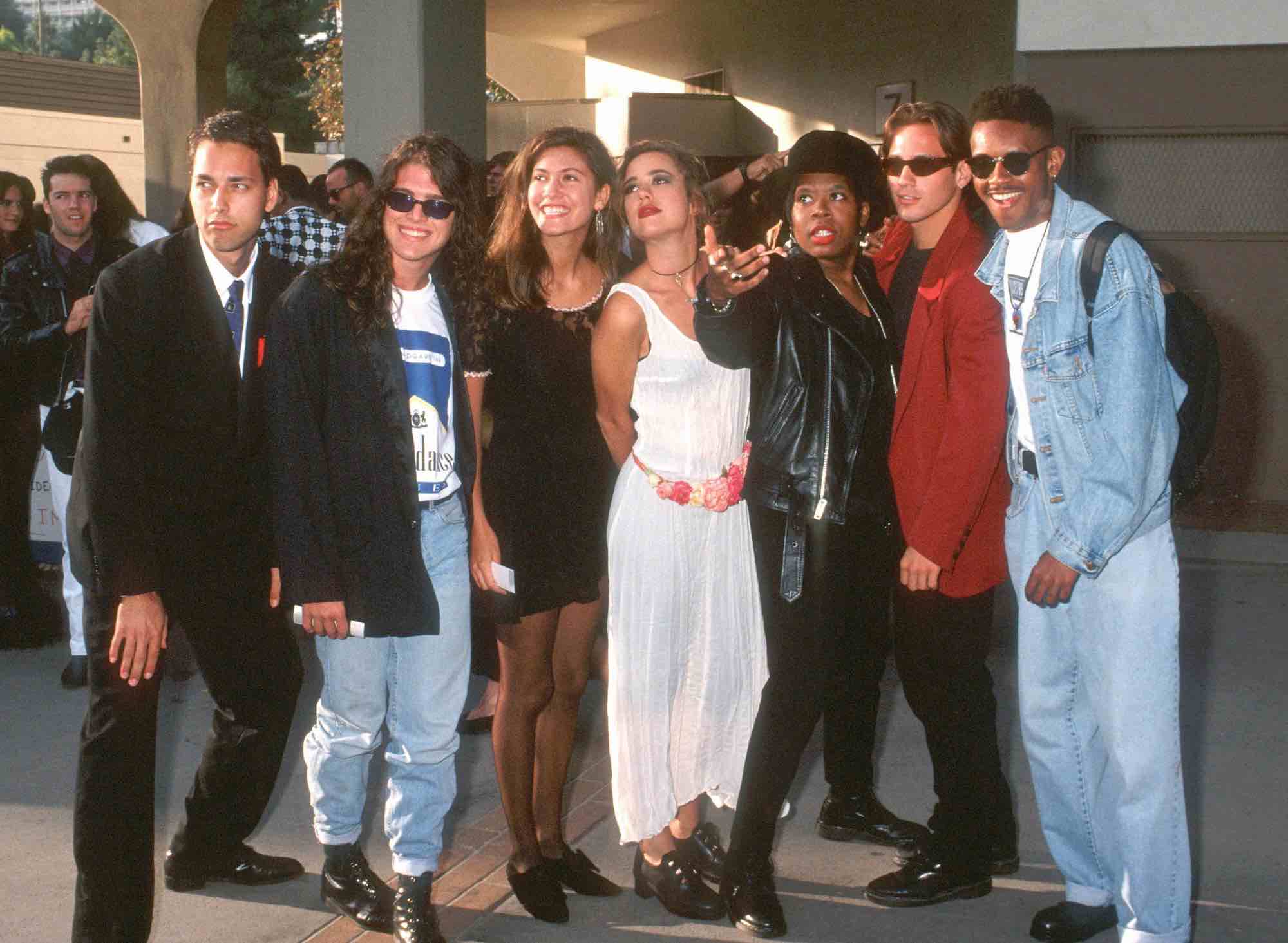
During each season, seven to eight people are selected arbitrarily from thousands of applicants between the ages of 18 and 26. Real World is known for its excellent use of its “talking head segments” at the end of each episode, during which each housemate discusses the events of the day.
True Life 1998-2017
Between 1998 and 2017, True Life (( Saidman, A. (1998, March 31). True Life. IMDb. )) was broadcast on MTV. Although there have been some newer episodes of the series since 2020, the documentary series lasted seventeen seasons with over 140 topics across 328 episodes. It consists of a documentary series filmed with a crew in documentary style, each episode focusing on a specific issue (current at the time). The first episode of True Life, for example, focuses on heroin addiction: “Fatal Dose” (03-31-1998).
Made 2003-2013
In contrast to True Life, Made 2003-2013 is marketed as a reality series that emphasizes self-improvement. Throughout the series, teenagers were attempting to navigate being “made” into their dream things, such as becoming a band member, singer ((Made. “Alyssa is made into a singer.” October 6, 2010. )), lifeguard (( Made. “Dawn is made into a lifeguard.” July 26, 2003. )), ladies’ man (( Made. “Tony is made into a ladies’ man.” September 27, 2003. )), or actress (( Made. “Angie is made into an actress.” October 11, 2003. )) “Made” contestants were assigned “Made Coaches” who were experts in their field and would assist them in reaching their goals.
Throughout Made, the focus was on showcasing the emotional and physical effects of teenagers as they navigated the work required to become their dream idea. The reality television series demonstrated how difficult it is to achieve your goals, in reality, and how that can adversely affect a teenager’s health as a result.
My Super Sweet 16 2005–2017
Like Made, My Super Sweet 16 was also marketed as a reality television series from 2005 to 2017 (spanning 10 seasons and 94 episodes). It follows the lives of fifteen-year-olds as they prepare for their sweet six-teens. There are a number of wealthy families featured in the series who throw lavish parties, and many of the episodes also feature celebrities’ children or celebrities themselves (Bow Wow, Sean Kingston, Aly & AJ, Chris Brown, Soulja Boy, and Teyana Taylor).
Despite the series’ name, some episodes feature quinceaneras (sweet 15s), My Super Sweet 21 (which was broadcast during MTV’s Spring Break party) (( “Svetlana.” IMDb. 2007, March 19. )), and My Super Swag 18 (featuring Soulja Boy). (( “Soulja Boy.” IMDb. 2008, December 17. ))
Hilary Duff performs the iconic theme song.
Throughout the world, My Super Sweet 16 has become a symbol of the zeitgeist. Besides featuring iconic performances by artists of the time, the show was accompanied by iconic music.
Laguna Beach 2004-2006
Lauren Conrad may not have been famous before the reality television series Laguna Beach: The Real Orange County 2004-2006, but she has certainly become famous since its premiere. Known as Laguna Beach, this reality show follows several young adults as they attend Laguna Beach High School, with its theme song being “Come Clean” by Hilary Duff.
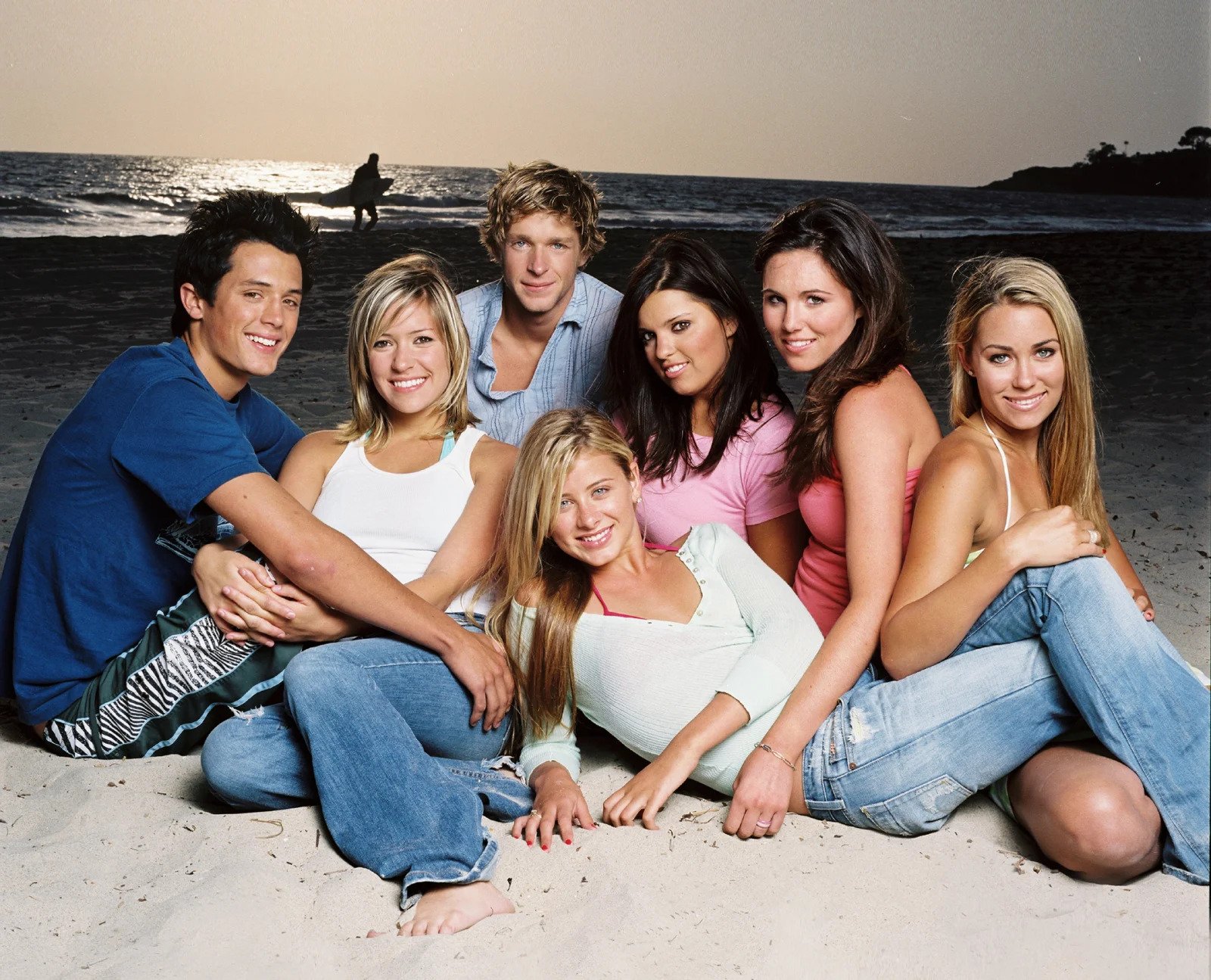
Throughout the two-season run, the show featured a main cast that included Conrad, Cavallari, Stephen Colletti, Lo Bosworth, Morgan Olsen, Trey Phillips, Christina Schuller, and Talan Torriero. However, Laguna Beach lasted for a total of three seasons (and 43 episodes), but the majority of the original cast went to college by the third season, including the juniors in the original cast. The show would feature romantic relationships, sex, friendship dynamics, and family dynamics and how these young adults, albeit rich, handled those emotions.
As a result of the heavily scripted nature of the show, Laguna Beach has not attracted a cult following as much as it used to. (Especially with its sequels: The Hills 2006-2010 and The Hills: New Beginnings 2019-2021) Despite this, Laguna Beach is marketed as a ‘reality television’ series, so its scripted component is part of the genre and works for the series. Laguna Beach continues to be a very innovative show to this day, especially for reality television.
MTV’s Meta-Celebrity Era
Throughout its promotion of music, MTV always placed celebrities on the same level as regular young adults. Although we were able to watch True Life in one instance, we could also watch Xhbibit install a 50″ flatscreen in a Cadillac in another on Pimp My Ride 2004-2007. In addition to watching Made, we’d also be able to see Snoop Dogg’s mansion on MTV Cribs 2000-.
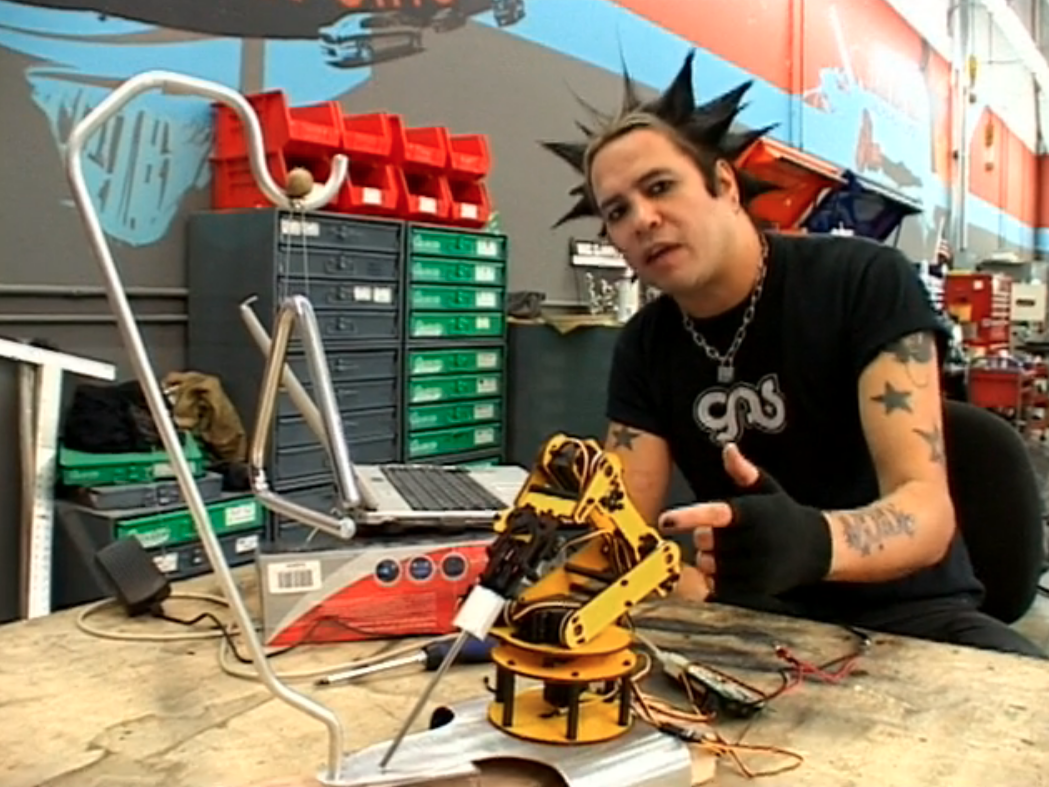
However, what is even more valuable than showing celebrities in their natural habitat is that MTV shows always come across as authentic from a celebrity perspective. There is never any pretentiousness or rudeness towards them, and in many instances, they are able to increase our appreciation of them, such as in Rob & Big 2006-2008 or Run’s House 2005-2009.
In their most private spaces, they welcomed us into their homes and made us feel like we were part of their family, rather than just a camera observing their daily lives. (Yes, even in a show like The Osbournes (2002).)
MTV Cribs 2000-2010
For ten years, MTV Cribs 2000-2010 kept viewers entertained with celebrities welcoming observers into their homes with the tagline: “Welcome To My Crib!” Among the best of the best have been featured on MTV Cribs, including a special hour with Mariah Carey.
 SUPER COMPILATION | #AloneTogether. YouTube. 2020.
SUPER COMPILATION | #AloneTogether. YouTube. 2020.With 19 seasons and 113 episodes, MTV Cribs provided us with a glimpse into the lives of celebrities through a documentary-style camera crew equipped with a Steadicam. The celebrity would have family and friends over, and even engage in conversation with the person watching the episode, as we examined each of their rooms in great detail. As recently as 2022, the series was revamped with new episodes.
Punk’d 2003-2012
Ugh, miss the days when we were able to prank celebrities and they enjoyed the experience. Kutcher’s Punk’d 2003-2012 perfectly captures the spirit of the early 2000s and the freedom that celebrities enjoyed. If you are unfamiliar with the show, it basically involves pranking famous people with hidden cameras. The early seasons of the series were largely centered around Kutcher’s personality, as well as his ability to prank his friends and demonstrate his meta relationship with other celebrities.
Besides giving Kutcher a lot to work with, the series provided viewers with a glimpse into celebrities’ lives that they were not familiar with. Even today, it is indifferent to see celebrities so out of their element and able to make jokes or get upset after Kutcher informs them that they have been punked.
Pimp My Ride 2004-2007
This show is adequately represented by the memes, don’t you think?
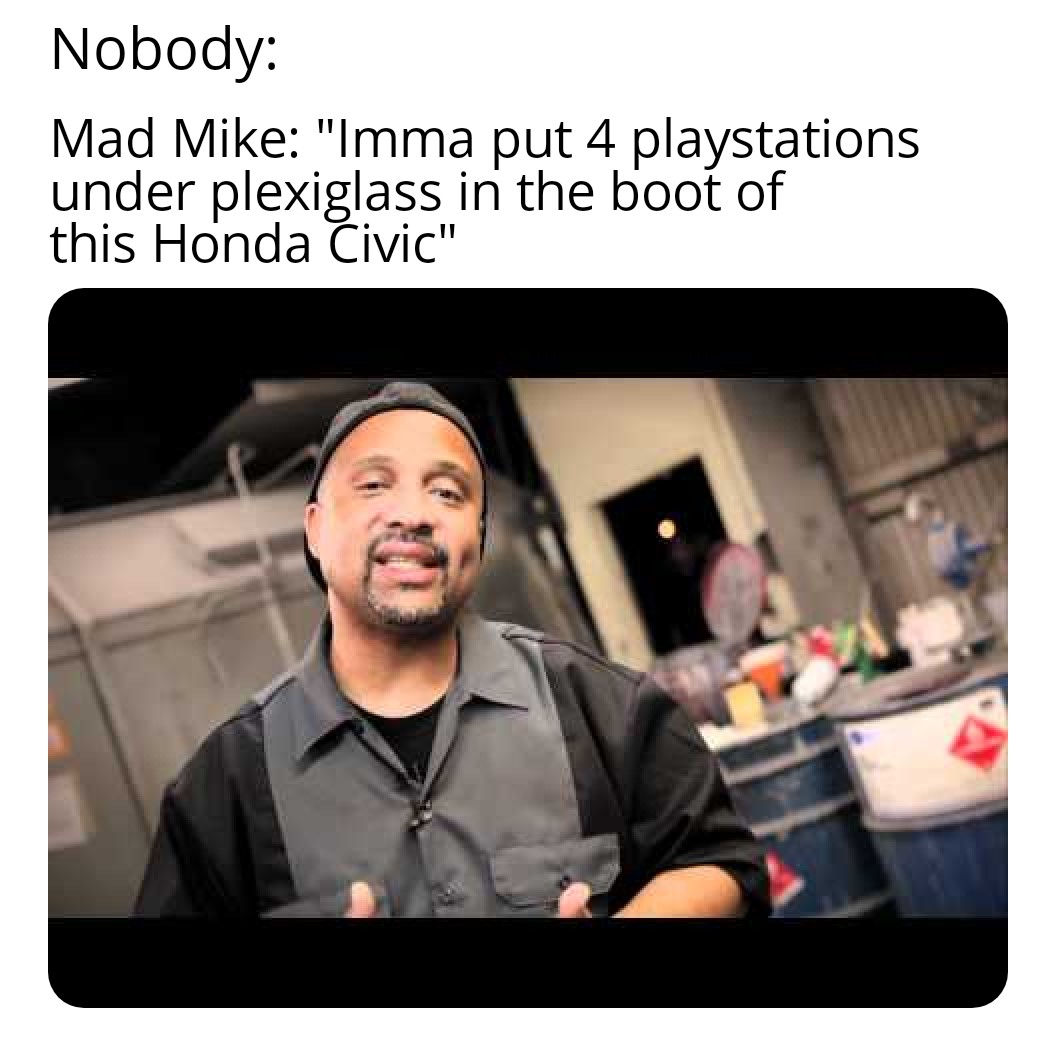
While it may not appear as such because it is so extravagant, Pimp My Ride 2004-2007 is a real show featuring Xzibit at the forefront. A total of 73 episodes were produced over 6 seasons, and all of the vehicles were constructed by West Coast Customs until season five, and then by Galpin Auto Sports thereafter. During Pimp My Ride, a young contestant from Southern California is chosen to “pimp” their ride; the contestant initially shows the current vehicle and convinces MTV that it needs to be enhanced.
After Xzibit appears, the show begins with a variety of changes and additions to the vehicle. By the end of the episode, the vehicle may have a flat-screen, a fish tank, or subwoofers. A fantastic aspect of Pimp My Ride is that it incorporates celebrities with ordinary people asking for ordinary things (maybe not so much what they want in their vehicle, but a car upgrade is a typical request). It was quite charming to have Xzibit as the host, and the series was able to remain entertaining throughout the duration, to the point that “Pimp My Ride was one of MTV’s most popular shows worldwide, and in the U.S., it ranked second only to The Real World in terms of viewership.” (( Wikipedia Contributors. (2023, March 4). Pimp My Ride. Wikipedia; Wikimedia Foundation. ))
MTV’s “Unapologetic” Dating Era
You can say what you want about the dating era on MTV, but it was a blast. Though some of the shows were quite risque, and the language used was not always appropriate, they still conveyed an authentic and satirical feeling in the best possible way.
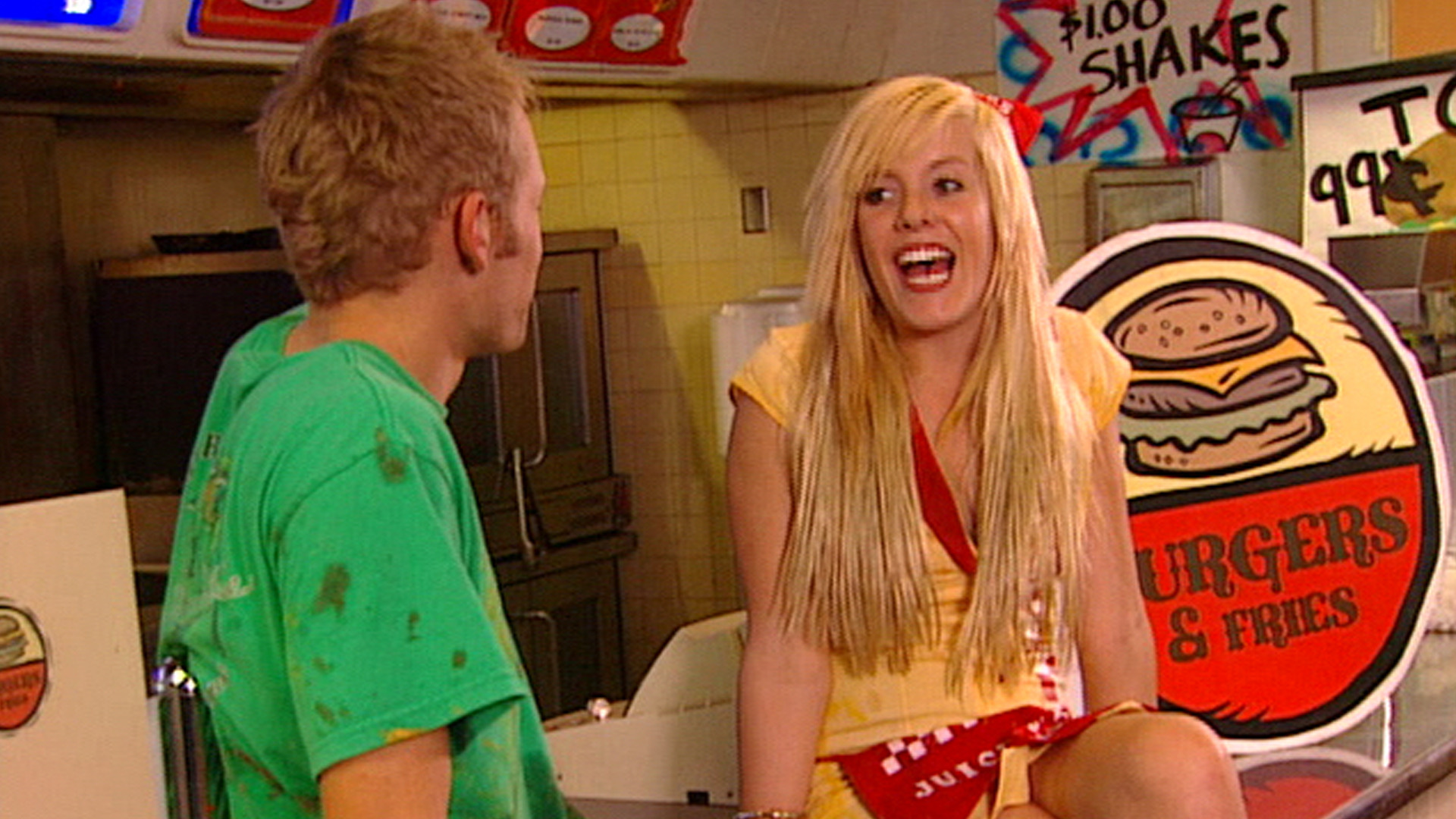
Today shows such as Parental Controls 2006-2010 (( Parental Control. (2005, September 6). IMDb. )) would not be able to be produced, but in 2006, occasionally parents chose their next girlfriend or boyfriend to replace their current one. It was a reality; it was our thing.
Next 2005-2008
From 2005 to 2008, Next aired on MTV for six seasons spanning 288 episodes; contestants would yell, “Next!” when the next person was up, which is a memorable piece of the show. The series was created by Jacqui Pitman.
As the title implies, the premise of the dating show is quite straightforward. Five single people travel around in a bus or RV, trying to win a date with a contestant chosen at random. In each episode, there are two contestants, one man, and one woman, and the appeal of Next is that you can win both a date and money depending upon how long you stay on the date; either you win a date or you choose to receive money or you get “nexted” and win how much money you lasted on the date. (A longer stay will result in greater earnings.)
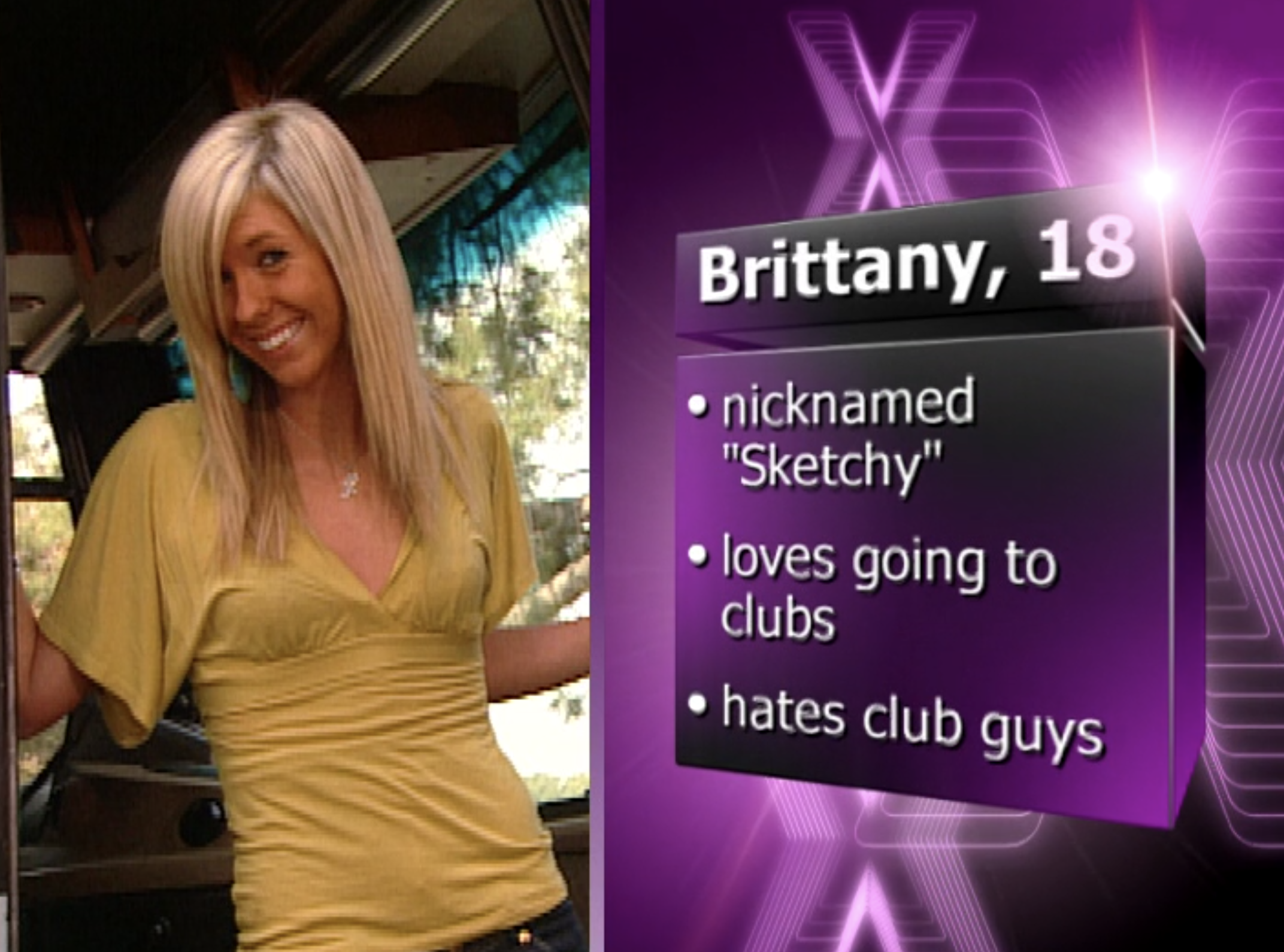
There were many MTV shows during this time period that featured actors who went on to appear in other shows on MTV, and Next is one of them. However, it also contributed to the show’s popularity. The characters they selected for the series were so out of the ordinary that they made it a truly entertaining experience. Our youth will always be haunted by the “Next Bus” experience — in the best of ways.
Room Raiders 2003-2009
There is a lot wrong with Room Raiders 2003-2009; it is sexist and would make an interesting series if made today. The reality dating series does, however, have certain endearing qualities; it was rather risque in 2003 to make a dating show with this premise at the time.
The series consists of three men and three women whose “rooms” are raided by a single male or female. The person who is “raiding” the room does not see any of the contestants’ faces, but only knows them based on the items in their rooms. As each contestant is raided, he or she chooses one of the three men or women based on what is found in the room.
Among these series, Room Raiders is most likely to have been (the most) scripted, as it consists mostly of actors and at least some of the rooms appear to be mock sets. It feels very “no one would approve of young adult women being dragged out in their underwear to a white van.” It has to be fake in all actuality, but that was also a part of the entertainment.
Parental Control 2006-2010
In secret, kind of a huge fan of Parental Controls 2006-2010. The concept of parents choosing their next significant other is an excellent premise for a dating show. Despite being one of the most highly rated shows that has the potential to be completely scripted, Parental Controls went far beyond what it meant to find love.
 Parental Control. YouTube. 2022.
Parental Control. YouTube. 2022. The show focuses on a set of guardians (in some way) who are not pleased with the significant other of their son or daughter and desire to “get rid of them.” The show follows the guardians as they conduct interviews for dates and choose the most suitable couple.
Once chosen, the child must decide whether to choose one of the new contestants, their current significant other, or to remain single. Similarly to Next, Parental Controls is exceptional due to its personalities; many of its significant others are unruly and rude. The dialogue in this show is quite unhinged — but most are actors from previous dating shows on MTV.
MTV’s Mockumentary Era
Despite being short-lived, MTV’s “mockumentary” era produced three shows that are irreplaceable in/on any list discussing MTV’s filmography.
“Mockumentaries” are parodies of documentary-style series: “Mockumentaries are works of fiction presented in a documentary-like format. Originally, the word “mock” was combined with the word “documentary” (i.e. fake documentary, mock documentary). It has been used by filmmakers to criticize, satirize, and generally make fun of various subjects for centuries.” (( Mockumentaries Explained — Definition, Examples & History. 2022, November 13. StudioBinder. ))
My Life As Liz 2010-2011
There is no question that My Life As Liz 2010-2011 is a personal favorite of the mockumentaries; as a young adult who felt like an outcast, this show appealed to most young adults of the era. The series centers on Liz Lee, an outcast living in a conservative and religious small town in Texas.
There are several characters in the show, including Bryson Gilreath, Liz’s love interest, but the show is primarily focused on Liz’s life. Liz is typically the outcast around replicas, which makes it difficult for her to maintain her identity throughout the series. In the first season, Liz is in high school, and in the second season, she is in college (in New York); there are two seasons and twenty-one episodes.
Although the show does follow the format of a reality television show, it generates a more authentic identity within Liz due to the authenticity of those around her which breaks the “reality” narrative of the show. The reason why My Life As Liz was such a resounding series was that Liz felt content enough with herself even though she desired to display her greatness to everyone else (you can be confident with who you are and want to show others without being narcessistic); a heartwarming quality of Liz in the show was that she was never unhappy or felt that she needed to change for others, not even her love interest. There was an engaging quality to the series since Liz was such a fun personality to watch; she inspired many to be their best selves.
The Hard Times Of RJ Berger 2010-2011
It is fair to say that The Hard Times of RJ Berger, 2010-2011, complemented My Life As Liz, as both shows were released at the same time and were either canceled or ended at roughly the same time. The series Hard Times exists as a homage to 2010 because they both were ahead of their time.
While the series is marketed as a sitcom, it appears to be a mix of a mockumentary and a sitcom. RJ Berger (played by Paul Iacono), a sophomore at Pinkerton High School in Ohio, is the protagonist of Hard Times. RJ’s endearing quality is that he is macrophallically endowed; the series explores his experience of being macrophallically endowed and unpopular.
There are several characters that surround RJ, such as Miles Jenner and Lily Miran, who are his best friends. Though the series has a comedic tone, it remains a heartwarming series despite its coming-of-age theme about…you know.
Zach Stone Is Gonna Be Famous 2013
In 2013, MTV aired a mockumentary sitcom called Zach Stone Is Gonna Be Famous 2013 starring Bo Burnham; it lasted for one season and twelve episodes. Burnham’s Zach Stone series was the pinnacle of his career in that it was based on him personally; the series follows Stone, a recent high school graduate who wishes to be famous rather than attend college.
In his quest to become famous overnight (despite having no talent), he hires a film crew to document his “daily life” as a “pre-celebrity.” Although the premise of the series is quite simple, it gained cult status in 2021 with the release of Inside.
The Incorporation Of Music & Reality Television
Not only were these shows revolutionary in that they portrayed something different and real during the time they were on, but they also incorporated music into many of the series we watched. MTV was, and is, known for its use of the “black bar” on the bottom of the screen to indicate the music track being played. (The good times, right?!)
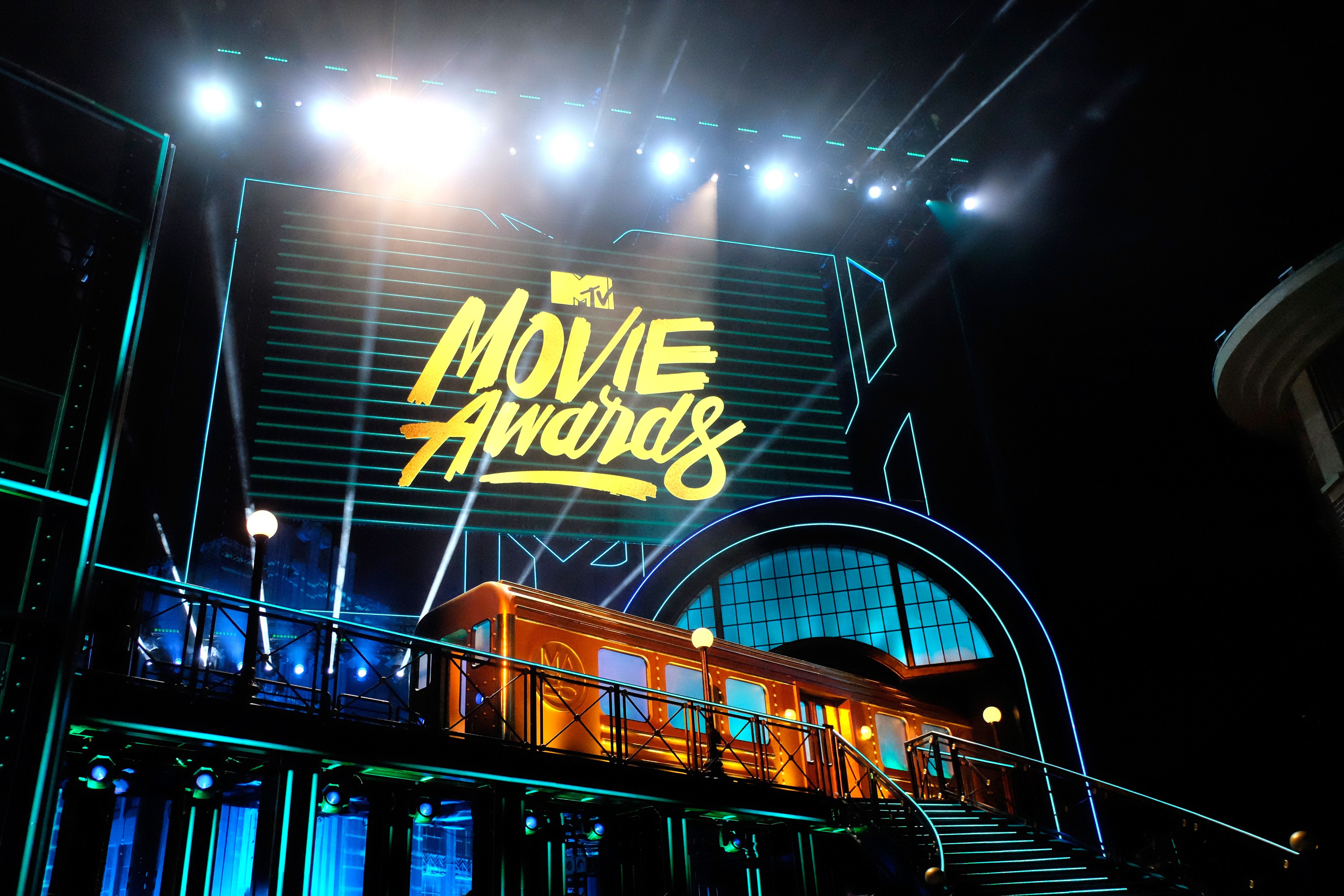
While MTV seemed to have drifted from primarily playing music, it still incorporated some of the best underrated and indie songs of the decade to soundtrack many of its most popular series.
These MTV Relics May Be Gone, But They Will Never Be Forgotten (( Wikipedia Contributors. (2023, July 12). List of programs broadcast by MTV. Wikipedia; Wikimedia Foundation. ))
- Remote Control 1987-1990
- Celebrity Deathmatch 1998-2002
- Making the Band 2000-2002
- Sorority Life 2002
- Newlyweds 2003-2005
- Life of Ryan 2007-2009
- Bromance 2008
- Jersey Shore 2009-2012
- 16 and Pregnant 2009-2020
- Girl Code 2013-2015
- Lindsay Lohan’s Beach Club 2019
The Lasting Appeal Of Music Television “MTV”
Since its inception, MTV has been a mainstay of pop culture, having influenced music, television, and film for more than forty years. Although the network has maintained its iconic status, it has evolved and adapted to remain relevant to younger generations.

For decades, MTV has successfully blended new and innovative content with beloved classics, ensuring its place as an integral part of pop culture.
Here is to the legacy of MTV!
“Ladies and gentlemen, rock and roll.”
